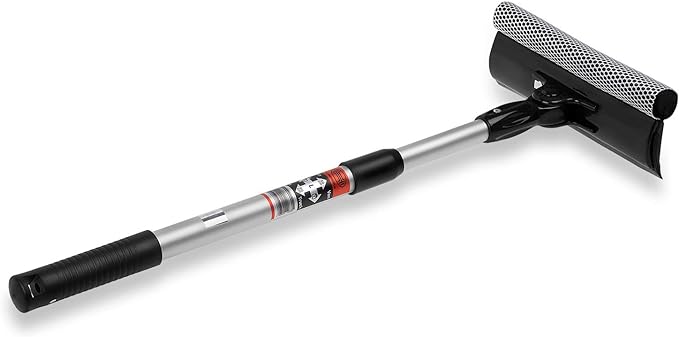As I write this, we are mere days away from the year’s shortest day. This proximity to the winter solstice implies that even moderately long drives will probably involve some night-time travel.
Twenty-five years ago, I actually preferred driving at night. The roads were emptier, and the kids were quieter. I remember many trips across France or Spain, with everyone else asleep in the back while I drove long distances, only stopping for a brief rest around 3 or 4 AM.
Nevertheless, times change. Nowadays, I find night driving more challenging. My eyesight isn’t as sharp as it once was. Though still decent enough to avoid glasses except for reading, driving at night doesn’t feel as effortless as it used to. The glare from other vehicles is bothersome, and I need to concentrate far more than in my younger years.
A few weeks ago, while traveling in our motorhome, my wife broke her leg. We rushed from Southwest France to Lincolnshire–a wise decision, as it turned out, because the French doctor had incorrectly set her leg.
We departed at 4 AM. After making her leg comfortable for travel, Siân quickly fell asleep. I hadn’t checked a map, relying instead on my Garmin sat nav–a significant error!
Rather than directing us to the motorway for an easy journey north. No it routed us through a hundred and fifty miles of country roads with heavy, two-way traffic, many small towns, villages, traffic lights, and countless roundabouts!
It was raining, and the pre-dawn hours of driving were nightmarish. We navigated narrow, unfamiliar roads, numerous oncoming large trucks thundering past us with so close I was breathing in! Despite using copious amounts of screen-wash, I couldn’t achieve a streak-free windshield. I got a headache and was tired. I didn’t want to wake Siân, so had no chat or music, and I didn’t want to take a break because the channel crossing I’d booked left me no time to stop.
This situation was a recipe for disaster. Breaking practically every guideline. But, somehow, we made it home–very muddy, both wing mirrors intact, our ABS system thoroughly tested and my Lucky Jim moniker still in place!
Here are a few items of best practise when driving at night. it’s all good advice but you’ll notice from my story above, I ignored almost all of it!
Plan your route
Don’t be like me, blindly following your sat nav in the dark, not really sure what route you’re taking. Being lost is not conducive to safe driving. Consider using apps or services that provide real-time traffic updates and road conditions. These can be a great help for those increasingly common night time road closures and confusing diversions.
Regular Eyesight Checks
When did you last get your eyes tested? All of us are getting older every day and poor eyesight can creep up on us. Get your eyes checked regularly and should you need to wear some glasses, you’ll be grateful for them on your next night drive. I’ve read about anti-reflective coating on glasses that reduce glare from oncoming headlights and I’m going to investigate.
Headlight Maintenance and Adjustment
Good driving lights make a massive difference, and make for much less driving fatigue. Is the height of the beam correctly adjusted? Check if dirty road scum is not covering your headlights, and you will be amazed at how much extra light you can get from clean headlights.. If your lights are poor, consider upgrading them to something brighter, but make sure you stay within the law if you do.
Make sure you properly adjust your lights so that you can see better and avoid people flashing their lights at you.
Cruise Control Caution
Only use Cruise Control if you are wide awake. At night, it can create a false sense of security, leading you to become less attentive and increasing the risk of dozing off.
Cockpit Lighting and Distraction Reduction
Bright lights in the cockpit and not good, most dashboards have a dimmer switch, other items like phones or Sat-Nav’s should be off or on night mode.
Optimal Cab Temperature
That warm air is cosy and comforting and brings us closer to dangerous sleep. Some cooler air on your face is good for concentration. If your travelling companion complains about being chilly, tell them to fetch a blanket!
Keep the Windscreen Clean
A full washer bottle is essential. A streak free windscreen is key when it comes to keeping reflections down at night.
Don’t use that disgusting screen cleaner that you often find at service stations, that will only make matters worse. Invest in your own telescopic washer/squeegee and use it often. A spotless screen makes all driving, but especially night driving, so much easier and safer.

Rest and Alertness
In my case above, we’d been at A&E for most of the day and night and then drove very early in the morning. Being tired on the road at night is very dangerous. Sharing the driving if you can is always a good idea.
Speed Management
Judging distance is harder at night, your all around visibility is often poor. Slowing down gives you less driving fatigue and gives you more time to stop if you need to!
Entertainment and Engagement
Music, chat, podcasts and audiobooks are all excellent for keeping the mind engaged without being a distraction.
Flexible Scheduling
Don’t give yourself impossible deadlines. Rushing for a ferry like we did will only make you more stressed and much more likely to have an accident. Building some extra time into your schedule for unexpected delays and rest stops is important.
You can discuss this article here


